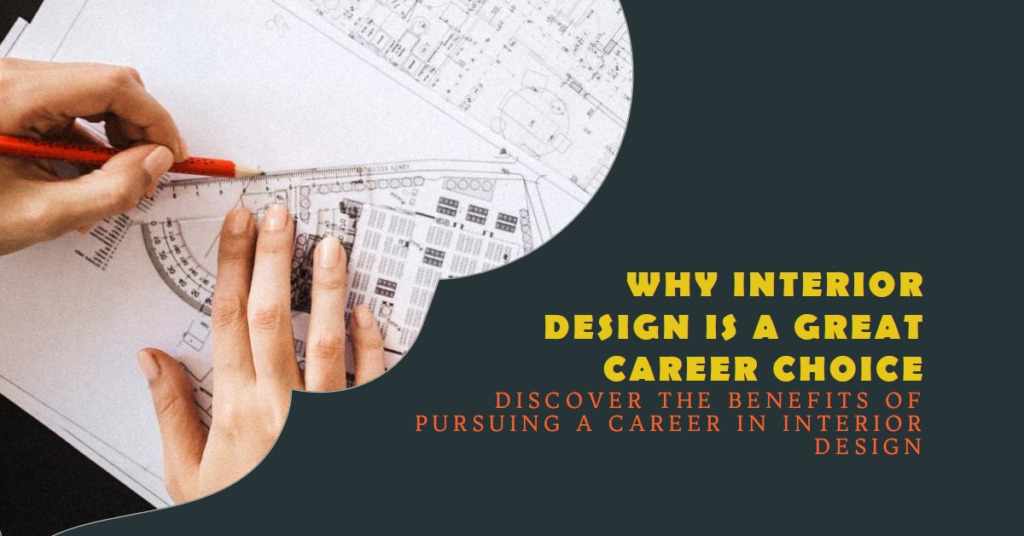
Table of Contents
- Introduction: The Allure of Interior Design
- Creativity Unleashed: The Artistic Freedom
- The Impact on Human Experience: Enhancing Lives
- The Thrill of Problem Solving: Tackling Challenges
- Diverse Career Opportunities: A World of Possibilities
- Collaboration and Networking: Building Relationships
- Lifelong Learning: Constant Evolution
- Financial Rewards: Lucrative Prospects
- Personal Fulfillment: Making a Difference
- Conclusion: A Career Worth Pursuing
Introduction: The Allure of Interior Design
Interior design, the art of enhancing the interiors of a space to achieve a healthier and more aesthetically pleasing environment, has evolved into a dynamic and rewarding profession. It is a career that marries creativity with practicality, offering a plethora of opportunities for those who are passionate about aesthetics, architecture, and functionality. For many, the journey into interior design begins with a love for transforming spaces, but it flourishes into a fulfilling career that impacts lives and spaces profoundly.
Creativity Unleashed: The Artistic Freedom
One of the most compelling reasons to pursue a career in interior design is the creative freedom it offers. Unlike many professions that confine creativity within strict boundaries, interior design encourages imaginative thinking and innovative solutions. Designers can experiment with colors, textures, and layouts, bringing their unique vision to life in various settings.
Furthermore, every project is a new canvas. Whether designing a cozy apartment, a luxurious hotel, or a modern office space, the possibilities are endless. This constant variation ensures that the job remains engaging and exciting, preventing the monotony that often plagues other careers.
The Impact on Human Experience: Enhancing Lives
Interior designers do more than just decorate rooms; they enhance the quality of life for the people who use those spaces. Thoughtful design can improve mood, increase productivity, and promote well-being. For instance, well-designed healthcare facilities can contribute to patient recovery, while a well-planned office can boost employee efficiency and morale.
Moreover, interior design is not just about aesthetics; it’s about creating functional spaces that cater to the needs of the occupants. This dual focus on form and function ensures that designers make a tangible difference in people’s everyday lives, providing a deep sense of fulfillment and purpose.
The Thrill of Problem Solving: Tackling Challenges
Every interior design project presents a unique set of challenges, making problem-solving a key component of the job. Designers must consider various factors such as space constraints, client preferences, budget limitations, and regulatory requirements. Finding solutions that satisfy all these criteria requires a combination of creativity, technical knowledge, and strategic thinking.
Additionally, working within these constraints often leads to the most innovative solutions. The ability to transform limitations into opportunities is a skill that interior designers hone over time, leading to a rewarding sense of accomplishment when they see their vision come to life despite the challenges.
Diverse Career Opportunities: A World of Possibilities
The field of interior design offers a wide range of career paths. Designers can specialize in residential, commercial, hospitality, or institutional design, among others. Each specialization has its own set of challenges and rewards, allowing designers to find their niche and pursue their passion within a specific area of interest.
Moreover, interior designers have the flexibility to work in various settings. They can join established design firms, work as freelancers, or even start their own businesses. This versatility ensures that there are ample opportunities for career growth and advancement, regardless of the path one chooses.


Collaboration and Networking: Building Relationships
Interior design is inherently collaborative. Designers often work with architects, engineers, contractors, and clients to bring their visions to life. This collaborative environment fosters strong professional relationships and provides valuable networking opportunities. Building a network of trusted professionals can lead to new projects, partnerships, and career opportunities.
Furthermore, collaboration with clients allows designers to understand different perspectives and preferences, enhancing their ability to create personalized and effective design solutions. This client-centric approach not only leads to successful projects but also builds a reputation for reliability and excellence.
Lifelong Learning: Constant Evolution
The field of interior design is constantly evolving, with new trends, technologies, and materials emerging regularly. Designers must stay abreast of these changes to remain relevant and competitive. This commitment to lifelong learning ensures that the career is always intellectually stimulating and professionally rewarding.
Additionally, advancements in technology, such as 3D modeling software and virtual reality, have revolutionized the way designers work. Embracing these tools allows designers to streamline their processes, present their ideas more effectively, and deliver superior results to their clients.
Financial Rewards: Lucrative Prospects
While passion and creativity are primary drivers for many interior designers, the financial rewards are also significant. Experienced designers with a solid portfolio and reputation can command high fees for their services. Specializing in high-end or niche markets can further enhance earning potential.
Moreover, the demand for interior designers is robust and growing. As people increasingly recognize the value of professional design, opportunities for lucrative projects abound. This financial stability, coupled with the intrinsic rewards of the profession, makes interior design an attractive career choice.
Personal Fulfillment: Making a Difference
Interior design offers a unique blend of personal and professional fulfillment. The ability to create beautiful, functional spaces that enhance people’s lives provides a deep sense of satisfaction. Seeing a project evolve from concept to completion, and witnessing the joy and appreciation of clients, is immensely rewarding.
Furthermore, interior designers have the opportunity to leave a lasting legacy through their work. Each project is a testament to their creativity and skill, contributing to the cultural and aesthetic landscape of their communities. This enduring impact adds another layer of fulfillment to the profession.
Conclusion: A Career Worth Pursuing
In conclusion, interior design is a multifaceted career that offers immense rewards for those with a passion for creativity and a desire to make a difference. It combines artistic expression with practical problem-solving, providing diverse opportunities for growth and success. The collaborative nature of the work, coupled with the constant evolution of the field, ensures that a career in interior design is both dynamic and fulfilling.
For anyone considering a career that blends creativity with functionality, and offers the chance to enhance the lives of others, interior design is undoubtedly a great choice. As the demand for well-designed spaces continues to rise, the prospects for interior designers remain bright, promising a future filled with exciting challenges and opportunities.


